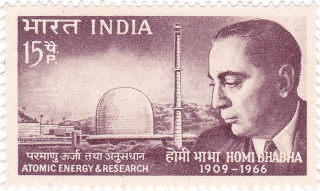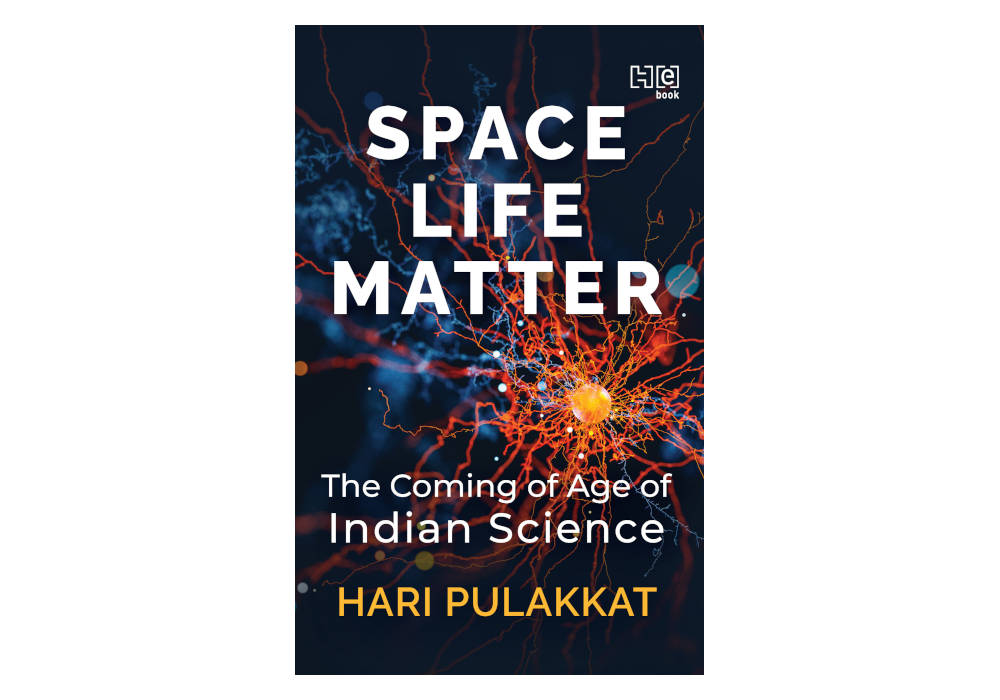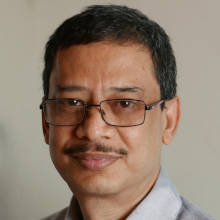Homi Bhabha was comfortably settled in British academic life when he came to India for a vacation in 1939. By then a scientific theory had been named after him—Bhabha Scattering, his explanation of how cosmic ray particles behaved when they hit the earth. It would later become part of quantum theory textbooks. Bhabha was an ambitious man, an aristocrat who liked science as well as music and painting, a physicist who was also a connoisseur of the arts. His prime intent in the 1930s was to build a career as a scientist in Britain. Bhabha’s dreams were shattered when World War II broke out when he was in India. He could not go back to Cambridge after his holiday.

[Bhabha on a 1966 stamp of India. By India Post, Government of India, GODL-India, via Wikimedia Commons]
The physicist soon found himself in an unusual situation in his home country. India was not a run-of-the-mill British colony. It had been economically exploited like all other British colonies, but unlike most others India had home-grown wealthy people. It had scientists, some of whom had become famous in the world by 1940. C.V. Raman had won a Nobel Prize in 1930 for his work on light scattering. Meghnad Saha developed his equation on the ionization of elements in stars in 1920, arguably a Nobel-class discovery. The research of S.N. Bose in the 1920s helped to lay the foundations of a field called quantum statistics. S.S. Bhatnagar made breakthroughs in magnetochemistry, proving that Indian science was not all physics. No other British colony had scientists of this quality. However, despite the presence of such stars, Indian science was not in good shape. Scientific institutions in India were small, badly run, and short of funds and ideas. Top scientists squabbled, sometimes in public. The bureaucracy stifled innovation.
After he decided not to return to England, Bhabha met C.V. Raman at the Indian Institute of Science (IISc) and got a job as a reader. Within a short time, he realized that science at the institute was old-fashioned. The research being done in all Indian institutions was outdated. It was not within his powers to change the culture of research in the country. But he could, if he tried, set up a model scientific institution where he could flourish. He owed it to himself and his country to build such an institution.
Bhabha was born into a rich Parsi family with good connections. Parsi families are usually related to each other. They also helped each other, and were not likely to let down a young man destined to be a star in the country. Bhabha persuaded the Sir Dorabji Tata Trust to fund a new scientific institute. He knew the managers of the trust; Sir Dorabji Tata had married Bhabha’s aunt. Bhabha was a close friend of Rustom Choksi, trustee and later director of the Tata Trust. Choksi had tilled the ground for his friend at the trust, briefing the management about the value of a new scientific institute, but hard negotiations were required to wrest a long-term commitment from them. As soon as it became clear that the Tatas would fund an institute, Bhabha hired scientists and started work in a bungalow on Peddar Road in Bombay owned by his aunt. He called it the Tata Institute of Fundamental Research (TIFR). Sreekantan was among the first to join him as a student.
Students at TIFR saw Bhabha as a larger-than-life figure. He wore a three-piece suit to work and spoke English in the clipped accent of the Indian elite. He kept himself aloof but behaved with dignity and poise towards everyone. Younger scientists would look at Bhabha with awe as TIFR grew and his reputation soared. When Sreekantan reached the institute in 1948, its office consisted of a few rooms in the Peddar Road bungalow. A year later they would move to the Old Yacht Club. A decade later, Bhabha would build a full-fledged institution in a romantic location overlooking the Arabian Sea….
The new location for TIFR was a piece of land overlooking the sea and surrounded on the other three sides by residences for naval officers. A few shacks existed on the barren piece of land. The Indian Navy was against building a scientific institution on its premises. Bhabha had approached the defence secretary to release the land, which belonged to the central government, but no answer had come for a year. The approval came when Bhabha, who shared a close friendship with Prime Minister Jawaharlal Nehru, told him about the plan for the institute. Later, at a ceremony for laying the foundation stone of the new building, Nehru would speak of the intense wrangling between the defence minister and the prime minister for the release of the land—Nehru held both the portfolios at that time.
At the new TIFR campus by the sea, in a building designed by the Chicago architect Helmuth Bartsch, Bhabha set about creating an environment that would attract the best in the world, even if it meant providing luxuries that were then considered unnecessary in India. When scientists moved to the new building in 1962, it was by far one of the best places to work at in the country. Bhabha had the entire building air-conditioned, not just his own rooms or those of the senior scientists. Those who worked there, including a large number of distinguished visitors, found the air conditioning a big relief in the humid weather of Mumbai. He filled the corridors with works of art, most of which were originals procured at great cost. He believed that art would inspire science and used a small portion of the institute’s budget to buy paintings. Bhabha was the first collector in India to recognize the value of contemporary Indian art. Over the years, the TIFR art collection grew to be among the richest in the country.
The first distinguished scientist whom Bhabha brought to TIFR was K.S. Chandrasekharan, the Indian mathematician at the Institute of Advanced Study in Princeton, where he was working alongside many brilliant minds, including Albert Einstein. Chandrasekharan joined TIFR in 1949 and created the mathematics department, which for over three decades was one of the crown jewels of TIFR and Indian science. Chandrasekharan and Bhabha had deep connections in the world of mathematics and physics, and they persuaded leading scientists and mathematicians to visit TIFR and give lectures. The visitors included the French mathematician Laurent Schwartz, a Fields Medallist who pioneered the theory of distributions; Paul Dirac, the British physicist who made so many contributions to physics that he is considered in the same class as Albert Einstein; the German-American physicist Hans Bethe; Fields Medallist and British mathematician Michael Atiyah. ‘They came for two months at a time,’ said M.S. Narasimhan, a Ph.D student of Chandrasekharan who later became one of India’s prominent mathematicians.
‘These days nobody comes for that long. Paul Dirac taught a course in quantum mechanics. Students used to transcribe their lectures, meet the scientists the next day and put the lectures in order.’ It was like a dream come true for the students. The American mathematician David Mumford, another Fields Medallist who visited TIFR in the late 1960s, described the atmosphere there in an article about events that changed his life.
‘The intellectual stimulation was intense: It felt as though half the world’s algebraic geometers were there and the other half came through for a visit. There were always large numbers of brilliant graduate students and willing, highly skilled note-takers who fed the manuscript to a legion of typists, transforming with ancient Remington typewriters my often confused and garbled lectures into a polished set of lecture notes—almost overnight. It was a highly interactive place: we talked continuously over lunch in the cafeteria, tea and coffee breaks, walks in the lush gardens amid the astonishing hoopoes and brilliantly coloured parrots.’
[This excerpt from Space. Life. Matter: The Coming of Age of Indian Science by Hari Pulakkat has been reproduced with permission from Hachette India.]


